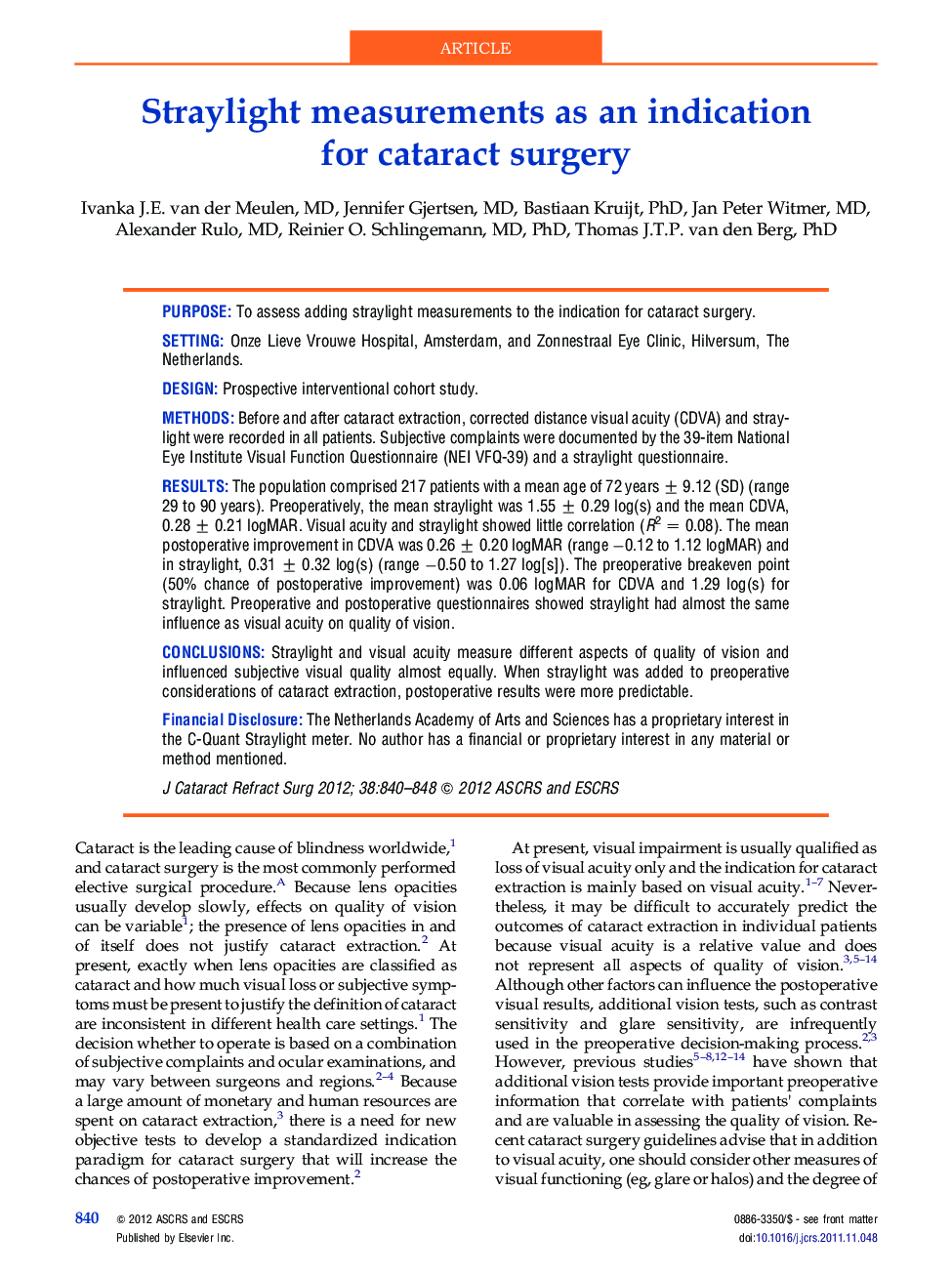| Article ID | Journal | Published Year | Pages | File Type |
|---|---|---|---|---|
| 4017970 | Journal of Cataract & Refractive Surgery | 2012 | 9 Pages |
PurposeTo assess adding straylight measurements to the indication for cataract surgery.SettingOnze Lieve Vrouwe Hospital, Amsterdam, and Zonnestraal Eye Clinic, Hilversum, The Netherlands.DesignProspective interventional cohort study.MethodsBefore and after cataract extraction, corrected distance visual acuity (CDVA) and straylight were recorded in all patients. Subjective complaints were documented by the 39-item National Eye Institute Visual Function Questionnaire (NEI VFQ-39) and a straylight questionnaire.ResultsThe population comprised 217 patients with a mean age of 72 years ± 9.12 (SD) (range 29 to 90 years). Preoperatively, the mean straylight was 1.55 ± 0.29 log(s) and the mean CDVA, 0.28 ± 0.21 logMAR. Visual acuity and straylight showed little correlation (R2 = 0.08). The mean postoperative improvement in CDVA was 0.26 ± 0.20 logMAR (range −0.12 to 1.12 logMAR) and in straylight, 0.31 ± 0.32 log(s) (range −0.50 to 1.27 log[s]). The preoperative breakeven point (50% chance of postoperative improvement) was 0.06 logMAR for CDVA and 1.29 log(s) for straylight. Preoperative and postoperative questionnaires showed straylight had almost the same influence as visual acuity on quality of vision.ConclusionsStraylight and visual acuity measure different aspects of quality of vision and influenced subjective visual quality almost equally. When straylight was added to preoperative considerations of cataract extraction, postoperative results were more predictable.Financial DisclosureThe Netherlands Academy of Arts and Sciences has a proprietary interest in the C-Quant Straylight meter. No author has a financial or proprietary interest in any material or method mentioned.
